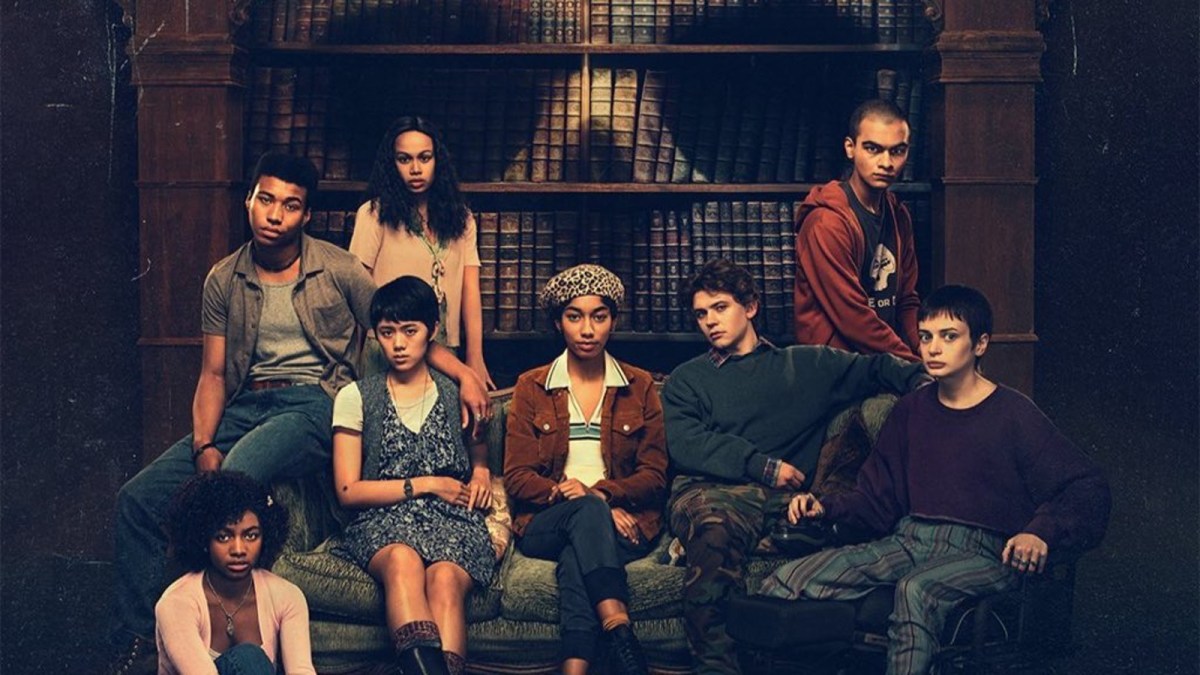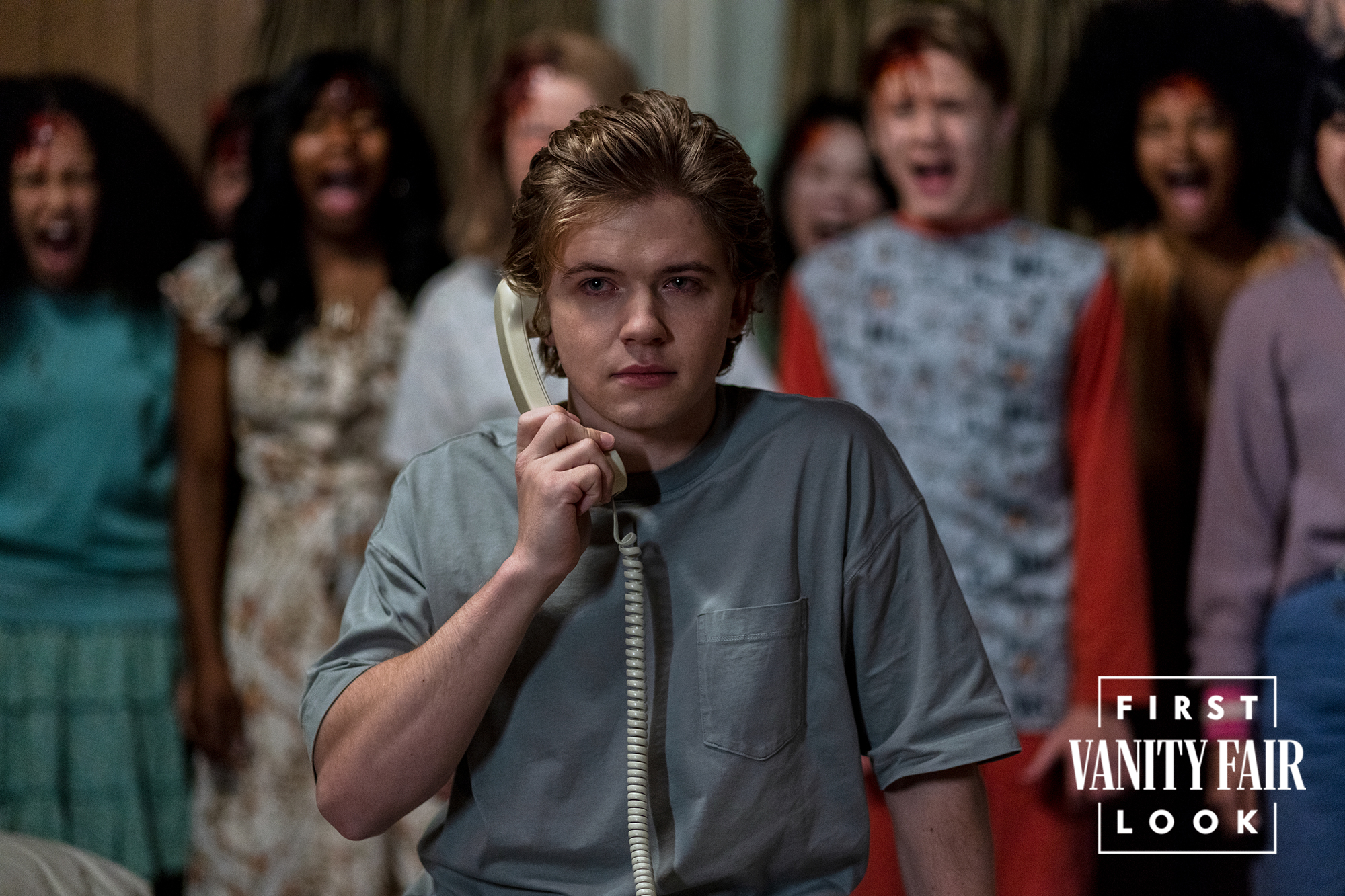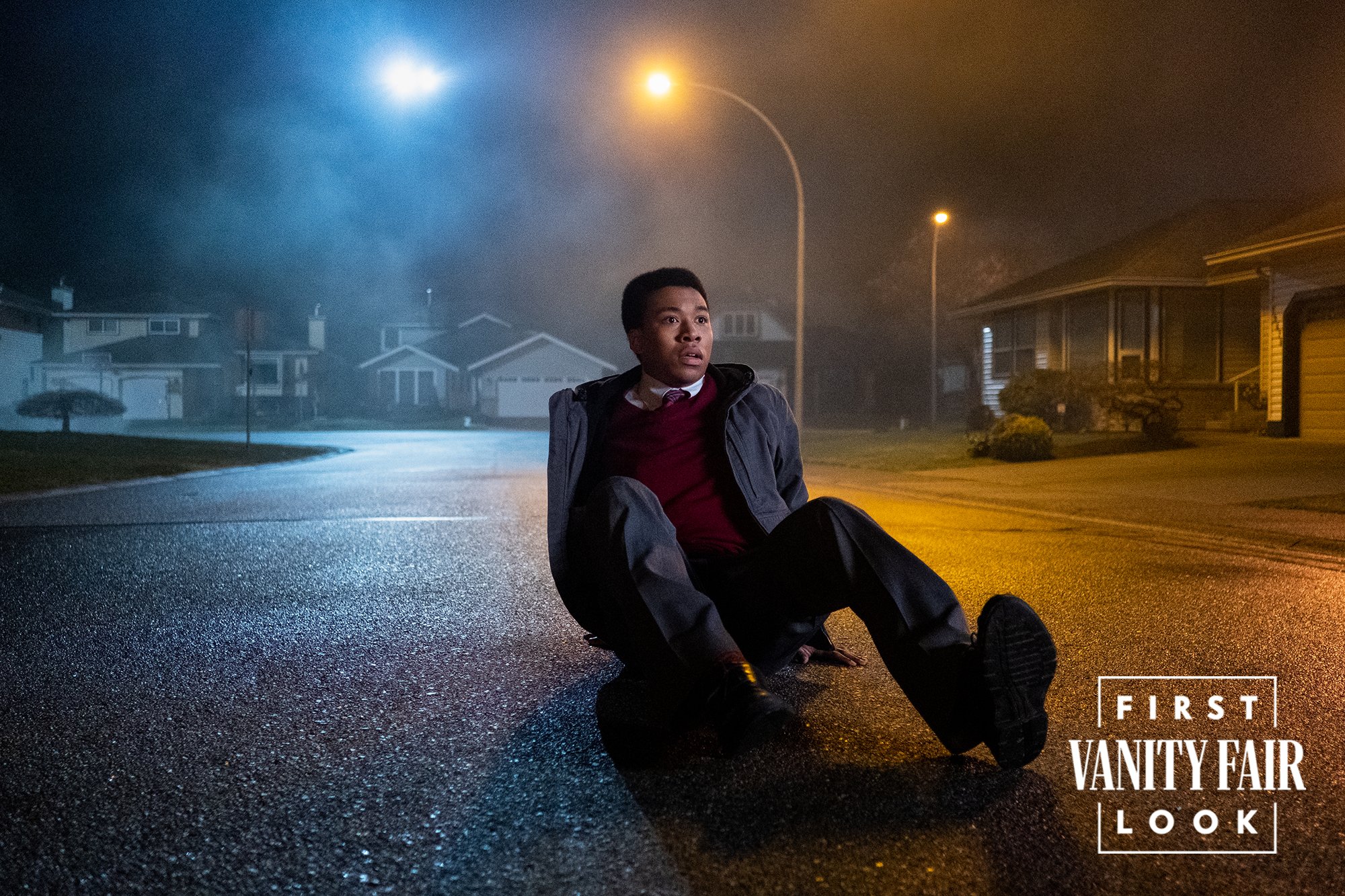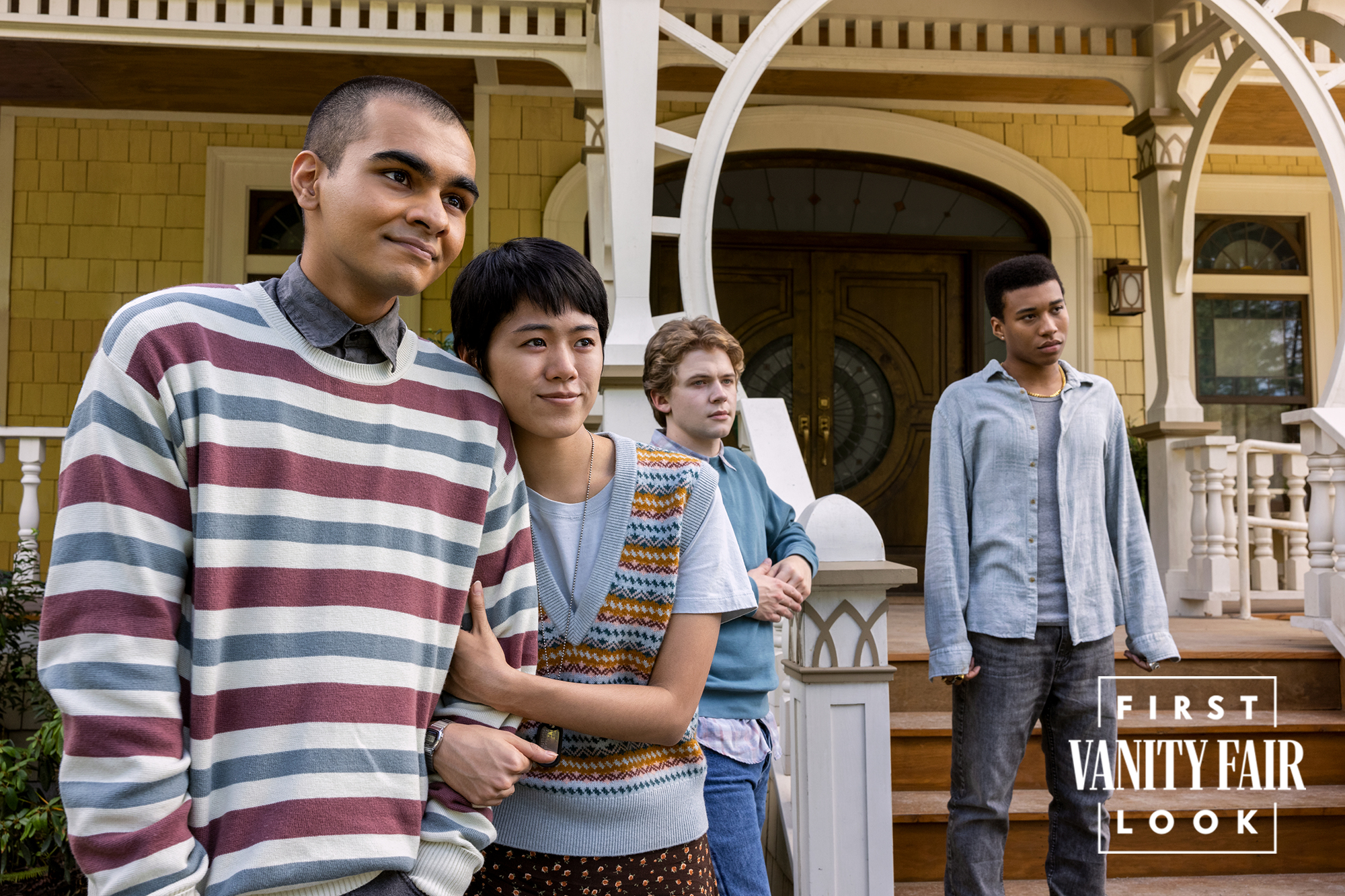The Midnight Club was filled with scares and twists as it took audiences down a supernatural road with compelling stories about kids trying to make the best of the time they have left. The 10-part Netflix series is based on Christopher Pike’s novels and from The Haunting of Hill House creator Mike Flanigan and The Haunting of Bly Manor writer Leah Fong who came together to deliver a series with surprising compassion for its characters and there’s so much to delve into.
The story takes place in the 1990s (with pop culture references galore) and follows a young woman named Ilonka (Iman Benson) who’s attending her first college party. There, a conversation with a boy ends abruptly when she coughs up blood and has to run to the bathroom. She sees flashes of foreboding images—an old man with black eyes, a mysterious house, a boy sitting on a bench by a cliff, and a hooded figure—before she faints. This foreshadows dark things to come.
Ilonka was diagnosed with thyroid cancer and that cuts her college life short. At one of the hospital computers, she researches the Brightcliffe teen hospice center and learns of a girl named Julia Jayne (this is important) who was cured of her terminal thyroid cancer after having disappeared for a week. The treatments Ilonka’s been undergoing aren’t working and this is a place where she would rather investigate the possibility of this miracle rather than go through round after round of cancer treatments.
The teenagers and their stories
Brightcliffe is currently owned by Dr. Stanton (Heather Langenkamp) where she cares for a group of other terminally ill teens. Kevin (Igby Rigney) has leukemia, Anya (Ruth Codd) has bone cancer, Spence (William Chris Sumpter) has HIV and Aids, Amesh (Sauriyan Sapkota) has glioblastoma, Sandra (Annarah Cymone) has lymphoma, Natsuki (Aya Furukawa) has ovarian cancer, Cheri (Adia) has a form of cancer she doesn’t fully disclose. To escape their hardships, they come together at midnight and tell ghost stories, but it turns out these are more than just tales of fiction as they open a window to their inner struggles and involve the greater mystery at Brightcliffe Hospice.
Ilonka learns during the tour that the house was built in 1901 by a logging industrialist named Stanley Oscar Freelan and his wife, Vera, as a halfway house during the Great Depression. It became home to a cult in the 1940s called Paragon before it turned into Brightcliffe Hospice. The strange occurrences take place during Ilonka’s “ghost tour,” and she faints after seeing a spooky woman in the halls.
Ilonka awakens, and after a conversation with Dr. Stanton, she goes to her new room where she finds symbolic markings under her bed. This was made by the previous resident, Rachel, a Wiccan, and it’s brushed off like it’s no big deal. Ilonka has a dream that night and sees the other teens sitting at the table. They’re all dead, and the hooded figure from her visions is seated at the head of it. She wakes up and follows Spence to the library where the teens tell the scary stories and, after some convincing, is allowed to join. Some of the kids are haunted by shadowy figures, both Ilonka and Kevin see ghosts, and they either try to figure out what’s going on or blame these occurrences on their meds.
The Paragon cult and the hourglass symbol
Ilonka discovers an hourglass symbol while at Brightcliffe Hospice. It’s in the library in a room that opens an elevator to a secret chamber and carved into a tree. In episode five, “See You Later,” Ilonka finds the Paragon diary and learns more about its history. A woman named Regina Ballard started the cult in 1931 as a new-age health philosophy, but it changed into something else. She called herself Aceso after the Greek goddess of healing and became obsessed with the five Greek goddesses, Panacea, Hygeia, Iaso, Aglaea, and her namesake, Aceso. She believed that with the right worship, she could rise above mortality. The hourglass was used to represent the infiniteness of time, and the cult hoped to wield the power of life.
In the woods by Brightcliffe, Ilonka meets a woman who calls herself Shasta (Samantha Sloyan) and has the Paragon symbol on her wrist. Shasta tells her that she likes the name “Ilonka” because it means “light,” and reveals that “Shasta” means “teacher.” She talks about how special this location is, the natural powers of the water, and how the chamomile that grows there are all imbued with this energy. The area is on a nexus point, ley lines of immense energy intersect there, which is why Brightcliffe was built there. She then introduces Ilonka to her group of healers who follow Greek culture and shows her how she makes her tea.
Shasta is revealed to be Julia Jayne. Julia found the Paragon Journal and there’s more to her miraculous healing. When Julia disappeared, she went out into the woods to hunt down Regina for the ritual, who agrees to teach her about the cult instead. She then concocts a story about her being cured she uses upon her return. Regina sacrifices four women in the basement of Brightcliffe to extend her life, but Regina’s daughter, Athena, escapes and tells the police, who see the aftermath of the ritual. Regina claims it was an accident, and Brightcliffe remained empty until Dr. Stanton turned it into a hospice in the 1960s.
The sacrificial ritual
In episode nine, “The Eternal Enemy,” Julia convinces Ilonka to gain entry into Brightcliffe to perform the ritual again. After everyone is asleep, Ilonka lets in Julia and her “sisters.” The ritual involves four women seated in a circle surrounding Julia, who’s in the center. They light candles, invoke the names of the Greek goddesses, and the women consume the “tea,” but Ilonka has second thoughts. Julia urges her to complete the ritual, but Dr. Stanton arrives and puts a stop to it. Julia escapes and Stanton and Ilonka stay to save the other women who were vomiting from the poison. The women take a secret staircase and get to emergency services, all thanks to Stanton’s rescue.
Dr. Stanton confesses that she knew about Shasta/Julia and the ritual, but she wanted Brightcliffe to use medical knowledge and natural healing. Julia has been trying to get inside for years, Stanton has had her arrested many times, and she’s not to be trusted. She says that anyone who’s been healed by the rituals was just luck and that any supposed magic would have worn off by now.
Anya dies in bed, unable to differentiate between her dreams and reality, Sandra is seemingly cured, and Ilonka has deep regret for her actions that night. She decides to leave the hospice and return to the care of her foster father, Tim, but the story doesn’t end there.
Dr. Stanton and the ghosts
A scene at the end shows Dr. Stanton locking up the hospice at the end of the night. She goes to her suite and the camera focuses on a framed newspaper story from 1898 about the Freelans, who happen to look like the ghosts that have been haunting Ilonka and Kevin. Stanton sits down at her vanity and takes off her wig. Underneath, she’s bald and on the back of her neck is the hourglass tattoo. Stanton was likely part of Paragon and might even be the aforementioned Athena.




